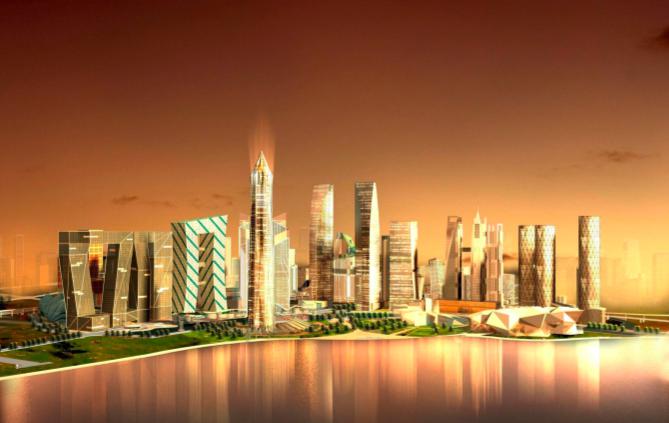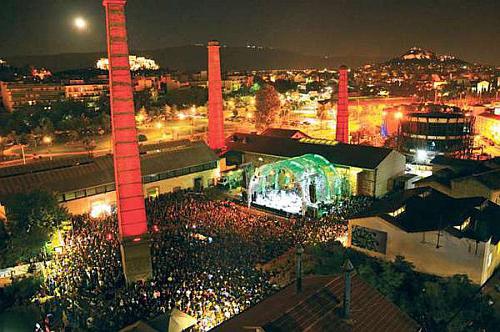A metropolis, a technopolis are Greek words for completely modern concepts. In Russian, these terms have been actively used recently. Moreover, if everything is clear with the metropolis, then technopolis is a rather rare word and therefore not clear to everyone.
Not a new novelty at all
As you know, the "policy" in Greek is a city. The prefix "techno" speaks for itself. Technical city. What does it mean? Is it a city with a developed technical infrastructure? Industrial city? The city is ultramodern, stuffed with electronics and other wonders of technology?
In fact, technopolises in Russia are not uncommon. They exist for a long time, everyone knows about them. Just before they were called not so beautiful. Indeed, in fact, technopolis is an ordinary scientific town. There were a sufficient number of them in the Soviet Union, and after the collapse of the country, a considerable part of this heritage went to Russia.
What is a technopolis?
Technopolis is a city engaged in science and high technology. A separate housing complex, entirely focused on science and only on it. Such technopolises arose around complex high-tech complexes. These could be institutes or research centers of various specializations, extremely important technical objects, requiring a large number of scientific personnel. In a word, in the center of a technopolis is some kind of high-tech core.

This means that a large number of scientists should be concentrated in this place. It is impossible to find among the inhabitants of an individual region such a number of scientists of the required profile. So, they need to be invited, and not for short-term work on a contract, but on an ongoing basis. To do this, they must be provided with housing. Scientists are also people, they have families and children, they buy food and things, get sick, go to movie theaters. Consequently, a technopolis must provide its inhabitants with everything necessary. Kindergartens, schools, shops, various institutions and organizations. Technopolis is a full-fledged cultural and residential, residential, scientific-industrial, educational zone, created specifically to meet the needs of the employees of the parent enterprise.
Silicon Valley
Technopolis cities exist around the world. The most famous of them is the legendary Silicon Valley. First, Stanford University was founded, then, after 10 years - a science and technology park. By 1960, there were already offices of 25 companies engaged in exceptionally high technology. By 1980, there were already 36 such parks. Research centers and laboratories have overgrown with a residential area, the necessary infrastructures, and a world-famous technopolis has arisen. The state support program played a significant role in this.
It was the government that was able to interest California business in high-tech research.
Beneficial science
Tax credits were extended only to companies engaged in science, and many firms seized on this loophole in an attempt to minimize payments. They gave large orders to institute laboratories and research centers, while receiving double benefits: they reduced tax payments and increased their own technological potential.
The situation was also very useful for the institutes: financial injections and huge orders made it possible to attract the best specialists and expand the research base.
Of course, the state also won. Yes, income from taxation of entrepreneurs was less. But scientific developments, paid by businessmen, led to a scientific and technological leap. To this day, the United States has a leading position in the field of electronics and programming, and this is billions and billions of dollars annually.
Japanese technopolises
With the creation of Silicon Valley, the world realized the benefits of such an organization of the scientific and technological process. Technopolises began to emerge across the planet. England, France, China, Korea, Malaysia, Thailand. The technopolises of Japan are particularly widespread. This country does not have a vast territory, nor natural wealth. There is nowhere to place large-scale production there, and existing facilities have already reached the maximum level of development and have been deprived of the opportunity to develop further. What was needed was not a quantitative, but a qualitative leap. The idea of a technopolis was the best suited for this.

The government of the country went on a proven path - promised tax incentives. The country's leadership voiced the directions of scientific activity that the inhabitants of technopolises should have developed. The prefectures appealed to the institutes and universities located in their territories with a request to draw up plans for the creation of specialized technopolises. The best projects and received the promised tax benefits and subsidies.
That is how Japan has won leading positions in the field of electronics and robotics.
Academgorodok of the USSR
In the USSR, scientific towns and academic towns have existed for a long time. But each of them is a real technopolis. Moscow paid much attention to the technical development of the country. Space technologies, for example, are monstrous in terms of science and resources. And this area of knowledge in the USSR paid a lot of attention. Each spaceport is thousands of scientists, tens of thousands of workers. A real technopolis, providing the work of a complex scientific and industrial complex.
There were academic campuses involved in military and medical developments, scientific towns in which physicists, chemists, and electronics engineers lived. Yes, cybernetics in the USSR was considered the prodigal daughter of capitalism. But this in no way meant that science in the country did not develop. Funding for various kinds of research has always accounted for a significant share of government spending in the USSR.
In a sense, such an organization of scientific work was even better. The branches of science were financed, business was absolutely not interesting, not promising any income in the foreseeable future. The contribution of the inhabitants of the academic cities of the USSR to world science is invaluable.
Skolkovo Project
Now a new technopolis is being created in Russia. Moscow, and the exact one, Moscow Region, will become the location of a huge research complex in which thousands of scientists will work. The project of creating an analogue of Silicon Valley in Skolkovo has long passed from the planning stage to the implementation stage. It will be the largest scientific and innovative center engaged in research in the field of high technology, electronics and space research.
Regional development strategy involves the allocation of significant amounts for such projects. Yes, there are many areas requiring immediate financial assistance from the state. And most of them look more urgent than high technology. But, as the experience of other countries shows, this is an erroneous position. Investing in science and development is necessary in the same way as it is necessary to allocate part of the grain for sowing. Yes, you can eat now - but then there will be nothing to reap.